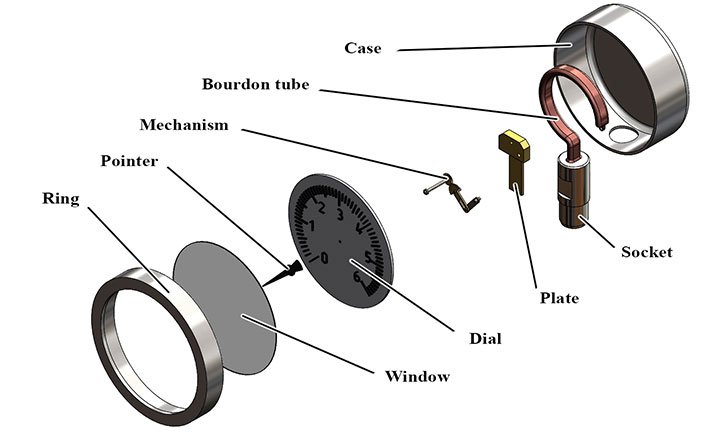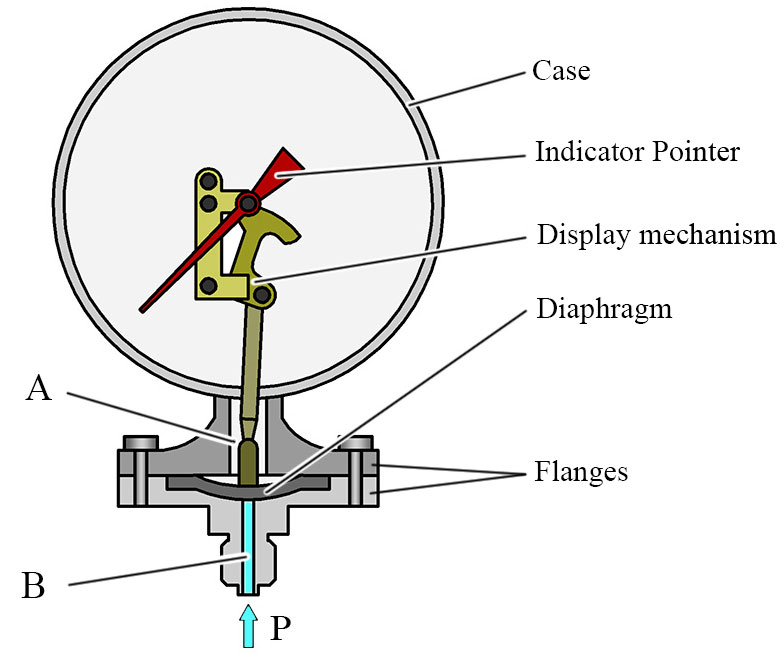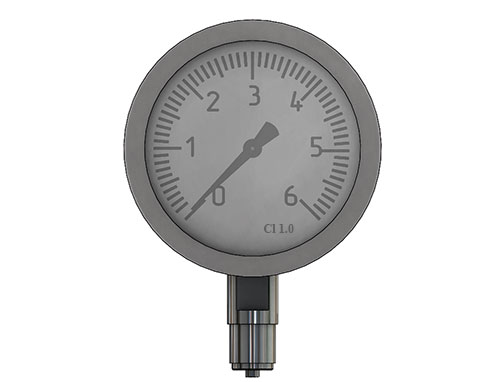Pressure gauge
The operating pressure in hydraulic or pneumatic systems is measured with respect to atmospheric pressure by pressure gauge.
Pressure gauges indicate pressure using measuring devices.
The most common measuring devices are:
- Bourdon tube,
- Diaphragm.
Bourdon tube pressure gauge
Pressure gauge with Bourdon tube pressure contains:
- Case;
- Socket;
- Bourdon tube;
- Plate;
- Mechanism;
- Dial with scale;
- Indicator Pointer;
- Window;
- Ring.

The pressure difference between the pressure in the system and atmospheric pressure causes the free end of the Bourdon tube to deflect accordingly. Movement is transferred via the mechanism to the pointer.
Pressure gauge with diaphragm
A diaphragm tension between two flanges separates the pressure chamber into individual pressure chambers.

Chamber A is connected to the outside and hence is pressurized by atmospheric pressure. Chamber B is pressurised with the operating pressure.
The pressure difference between the pressure in chamber A and the pressure in chamber B causes the diaphragm to deflect accordingly. This deflection is transferred via a rod to the mechanism and indicator pointer.
Accuracy class
The accuracy class for pressure gauges is expressed as a percentage of the span.
For example, class 1,0 is class for pressure gauges with absolute accuracy better than 1,0 % of the nominal full scale reading.
